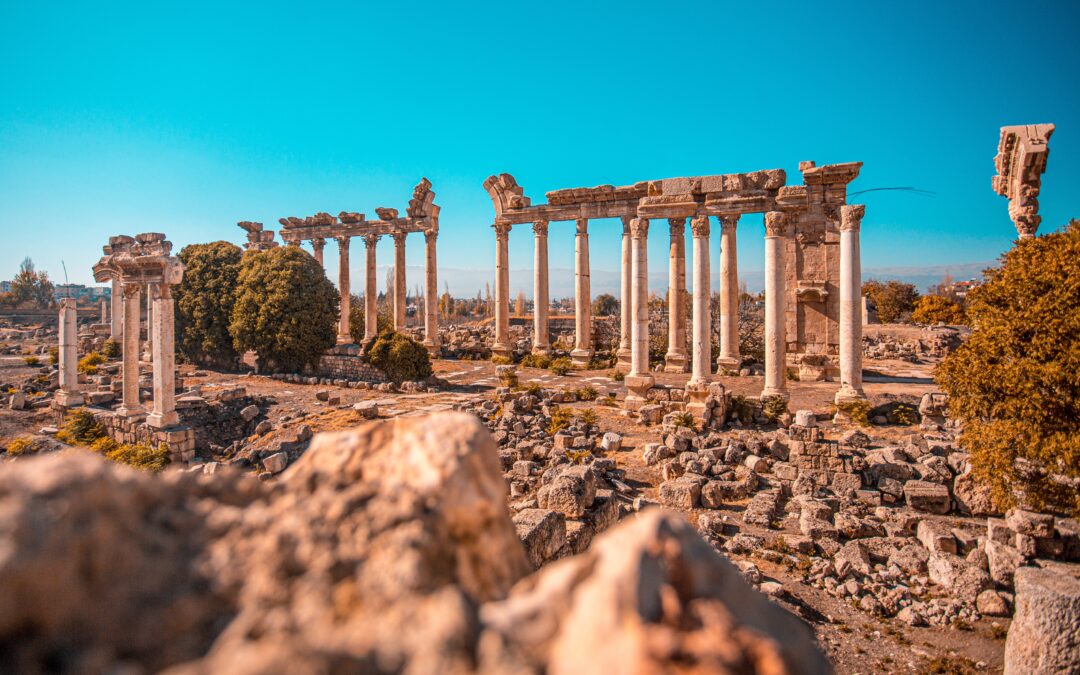Lebanon, a Middle East country along the coast of the Mediterranean Sea, was once a luxurious tourist destination, but the Lebanese Civil War, which ran from 1975 to 1990, and subsequent conflicts during the 21st century have hindered the growth of its economy and health of its infrastructure. A little more than a decade ago, the country, with support from the World Bank, completed a $30 million infrastructure repair program that involved the rehabilitation of 175 kilometers of roads and reconstruction of more than 15 public buildings. The civil war in Syria, however, has slowed economic growth with Lebanon taking in more than 800,000 refugees.
Beirut, the capital of Lebanon, is a developed city with seafront towers and modern architecture, while other cities and towns are known for their Roman architecture, including ruined temples and castles, and ornate churches. Below is a mix of six modern and historic landmarks in Lebanon.
National Museum of Beirut
A major cultural institution and the largest museum in the country, the National Museum of Beirut houses approximately 1,300 objects and artifacts from all Lebanese periods of history, including Roman, Byzantine, Mamluk, and Phoenician. It houses one of the most significant collections of Phoenician objects, which was the vision of Claude Prost, a representative of the French Antiquities Service in Syria and Lebanon who, in 1921, had the idea to build museums in Beirut, Aleppo, and Damascus. However, the museum in Beirut wasn’t inaugurated until 1942.
French architects Pierre Leprince-Ringuet and Antoine Nahas designed the Egyptian-style building, which is made of Lebanese ochre limestone and features four large columns and a glass roof to allow for natural overhead light. The 59,000-square-meter museum, situated along the “Green Line” dividing East and West Beirut, became an important military base during the Lebanese Civil War, with exhibition halls and art galleries serving as barracks.
Temple of Jupiter
A historical site at the Baalbek complex in Heliopolis Syriaca, the Temple of Jupiter is a colossal ancient Roman temple that was constructed over several years and completed in AD 60. Sitting atop an elevated podium, the temple has six remaining 20-meter-high columns (there used to be 54) and is particularly regarded for the impressive size of the stones used to construct it. Three in particular near the west end, known collectively as the trilithon, weigh a combined 2,400 tons.
Built to honor Jupiter Heliopolitanus, the temple once housed a gold statue of Apollo and was largely used for oracular activities until Emperor Theodosius ordered its closure before 400 AD in an attempt to weaken paganism. Lightning damaged the temple in AD 524, according to historian Zacharias Rhetor, and many of the surviving columns were shipped to Constantinople. Today, the ruined temple is an imposing reminder of the ancient world and Roman culture.
Martyrs’ Square
Perhaps the most important landmark in modern Lebanese history, Martyrs’ Square in downtown Beirut is a public gathering place that was selected in 1931 to serve as a tribute space for martyrs executed during the Ottoman rule of Lebanon. The area, like the National Museum of Beirut, was along the “Green Line” that divided East and West Beirut during the Lebanese Civil War and was completely destroyed during the conflict.
The Holy Spirit University of Kaslik (USEK) led efforts to rebuild and renovate the square following the war. Today, it is a popular site for Lebanese people to come together and have their voices heard.
Sama Beirut
Beirut might not be known for its dramatic skyline or massive skyscrapers, like Dubai and the Burj Khalifa, but it does have seven buildings that are at least 150 meters tall. Sama Beirut, at 186 meters, is the tallest of these buildings. The peak of the skyscraper offers panoramic views covering Mount Lebanon, the bay of Jounieh, and the port of Beirut. Constructed in 2016, the building is composed of four massive sheets, each of which is folded and enveloped over the one before it to present the look of a stairway to the heavens.
Sama Beirut’s ground floor features restaurants, cafés, and shops, while the next six floors are occupied by offices. There are then more than 25 residential floors and a lavish penthouse near the top of the tower.
Sidon Sea Castle
Another ruined fortress, the Sidon Sea Castle was an important military facility in the 13th century. The Crusader Knights of St. John of Hospital and Jerusalem built the fortress on a small island along the Mediterranean coast of Lebanon to protect the ship carrying German emperor Frederick II to the Holy Land. The Mamluks captured and destroyed the castle in 1291 and it has been damaged and restored several more times in subsequent centuries.
Today, the sandstone castle is about 80 x 50 meters with an arched gate entrance, a pair of towers, and an 80-meter causeway that is believed to be the only piece of a Middle Ages fortified bridge still standing in either Lebanon or Syria.

